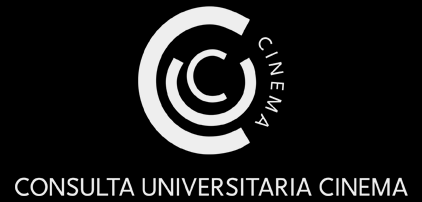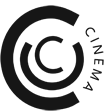While spending more and more time online, we increasingly forget the material conditions that enable us to communicate, study, or work over the internet. Our digital life seems to be disembodied and immaterial, although eye fatigue, infrastructural breakdowns, or electricity bills might teach us otherwise. In this issue, contributions in different sections shed light on the materiality of (digital) media. They point to the vulnerability of archives, emphasise the agency of the nonhuman world, address (digital) practices, and problematise their environmental footprint.
In their introduction to the special section #Materiality, guest editors Josephine Diecke, Bregt Lameris, and Laura Niebling review concepts and meanings of ‘materiality’. They provide a detailed overview of how material dimensions of the media have been approached within film and media studies, and emphasise the necessity to rethink previous conceptualisations in light of the digital turn and post-digitality. ‘Materiality has not vanished with the transition to the digital’, they state, underpinning the need for reflections on digital media practices.
Rémy Bocquillon & Joost van Loon explore non-fungible tokens which they approach as parasites that facilitate a relation between artist and audience. They argue that although NFTs contribute on the one hand to a sense of symbolic misery, they are on the other hand also able to re-create a sense of community that revolves around art. Focusing on the sonorous materiality of film, Işıl Karataş demonstrates how listening to the sonic realm can liberate materials from their anthropocentric status. Her sound recordings from film labs and workshops indicate not only particular materialities, they allow her also to discuss their environmental footprint, account for the presence of nonhumans, and speculate about sustainability-centred media futures. Based on a discussion of laser technology, Jens Schröter points us to quantum mechanics and shows how theoretical physics has changed our understanding of material properties. Through a detailed study of the laser, Schröter argues for a stronger engagement with quantum theory within cultural and media studies. Tim van der Heijden & Mirco Santi explore the 9.5mm film and the Pathé Baby projector and camera. Drawing on historical re-enactments with obsolete media technologies they reflect on the materiality and functionality of the Pathé Baby system and demonstrate that hands-on experiments can open up new perspectives on past media and the tacit knowledge of their usage.
The Features section includes two significant conversations. We document an online conversation with archivists and scholars from the Center of Urban History in Lviv about the work of heritage organisations in times of war. Dagmar Brunow, leader of the NECS workgroup Cultural Memory and Media, spoke with Oleksandr Makhanets, Taras Nazaruk, Natalia Otrishchenko, and Bohdan Shumylovych, who are not only providing shelter to refugees from Eastern Ukraine but also trying to create a stable situation for their students. Their goal is to make sure that documents of war events and experiences are archived. In this conversation they address the vulnerability of archives, describe how they collect communication on social media and oral history testimonies, and reflect on the quick transformation of memories. In an interview with Malte Hagener and Annie van den Oever, film historian Tom Gunning shares his memories of the early years of academic film studies. He talks about the people he considers his mentors, the legendary FIAF conference in Brighton in 1978, and the dialectics between theory and history. Furthermore, he reflects on styles and processes of writing and possible futures of film studies.
The Features section continues with research articles. Drawing on methods of digital humanities Emil Stjernholm conducts a computer-assisted corpus analysis to demonstrate the change of topics and styles in Anslagstavlan, a Swedish television programme that circulates public information. He points out that the use of automatic speech recognition allows television historians to gain an overview of a large corpus of audiovisual media and notice patterns and trends that would not be visible by close reading alone. Katrin Pesch shows how in Mati Diop’s film Atlantics (2019) the evidentiary and the ghostly converge. Interrogating the film’s post-photographic realism and the aesthetic qualities of the digital, she argues that Atlantics uses computer-generated images as a medium of critique, and links the film and its depiction of Dakar to post-colonial politics. Sharon Zelnick unpacks Dani Gal’s film White City about Zionist leader Arthur Ruppin and the migration of the Bauhaus style and of racist practices from Nazi Germany to Zionist Palestine. Drawing on the theoretical concepts of ‘multidirectional memory’ she points out how the film memorises both, the Holocaust and the Nakba, by addressing shared stories of racism, and connects Gal’s aesthetic work to his political activism that she understands as practices of co-citizenship.
The audiovisual essay section is edited by Domietta Torlasco and brings together video essays that engage with archival materials. In their films and videos, Cauleen Smith, Deborah Stratman, Domietta Torlasco, Maha Maamoun, and Sara Fgaier make use of found footage but also suspend the distinction between the essayist as subject and the archival material as object. By focusing on the ongoing reconfiguration of the world and at the same time recognising that archival images have their own life, the video essays emphasise that the world has its own agency.
The film festival review section opens with a round table conversation ‘On Greening Film Festivals’ in which Rachel Dodds, Laura U. Marks, Fabienne Merlet, and Amaia Serrulla share insights and best practices to reduce the environmental footprint of film festivals. Eleni Papadopolou Melea then compares how the Tallinn Black Nights Film Festival and the Singapore International Film Festival dealt with Covid restrictions in their 2020 editions and shows their different approaches towards hybridity. Also, a review by Aida Vallejo & Andrew Moore on Sheffield DocFest addresses the return to post-pandemic experiences.
The exhibition review section contains articles on the shows How to Win at Photography: Image-Making as Play at the Photographers’ Gallery in London by Peter Buse; the 59th Venice Biennale International Art Exhibition by Marco Baravalle; and on documenta fifteen and the 12th Berlin Biennale by Agatha Mergler. There is also a book review discussing absence in cinema, by Tanya Shilina-Conte.
Our review sections are edited by teams whose constellations have changed in the last few months. We would like to take the opportunity to welcome them here. The festival review section is edited by Marijke de Valck, Antoine Damiens, and Diane Burgess. The exhibition review section is edited by Miriam de Rosa and Annet Dekker. The book review section is edited by Victoria Pastor-González and Patricia Nogueira. We thank these editorial teams, and also past review section editors Lavinia Brydon and Leo Goldsmith, for their dedicated work. And we thank you, dear readers, for your continued interest in the journal.





